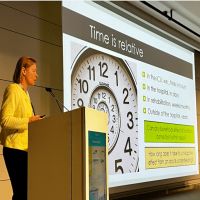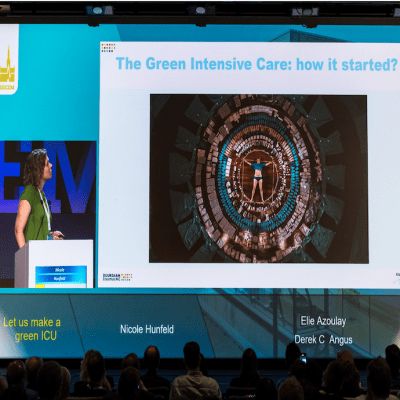In a new review, the authors identify the pros and cons of indirect calorimetry to estimate resting energy expenditure and define individual nutritional energy targets among critically ill patients.
Indirect calorimetry (IC) is a monitoring tool that provides factual information on metabolism. There is significant evidence to show an important association between mortality and calorie intake in early critical illness. The importance of identifying individual energy demands and preventing overfeeding and underfeeding cannot be ignored.
In a systematic review and meta-analysis published in 2020, no improved outcomes were found when IC was used, although prescribed energy targets were more closely met with IC informed energy delivery than predictive equations. Findings from the review suggest that IC feedback can improve feeding performance and may help prevent underfeeding and overfeeding in critically ill patients.
Another study showed a 23% reduction in short-term mortality when energy targets were based on IC. In yet another meta-analysis, 28-day mortality was found to be lower when IC-guided nutrition was used compared with hypocaloric feeding. None of the studies report a shorter length of stay or mechanical ventilation duration.
It is important to base personalised nutrition on individual energy targets. At the same time, it is important to note that the predictive equations can be inaccurate and can lead to 500–1000 kcal/day nutrition targets higher or lower than individual demands. This can increase the risk of underfeeding and overfeeding.
IC cannot be used in all patients. For example, in ventilated patients with FiO2 > 0.7 and PEEP > 12 cmH2O, no reliable measurements of VO2 and VCO2 are possible. In non-ventilated patients, measurements can only be taken when oxygen therapy has been stopped. Therefore, identifying which patients are most suitable for IC is important.
Some of the costs associated with IC include device investment costs, consumables, calibration gas, and service. In addition, staff times should also be considered. A typical IC procedure takes approximately 5 to 10 minutes. However, the cost of IC is compensated with improved patient outcomes, as reported in several studies. Optimisation of nutritional performance can have an impact on readmission rates, long-term functional outcomes and quality of life.
Overall, IC is the gold standard for measuring energy expenditure to set nutrition therapy goals during critical illness. However, there is a need to address the technical and patient-related limitations of IC and to identify future developments that could monitor REE continuously and during oxygen therapy and non-invasive ventilation.
Source: Critical Care
Image Credit: iStock
References:
De Waele E, van Zanten ARH (2022) Routine use of indirect calorimetry in critically ill patients: pros and cons. Crit Care 26, 123. doi.org/10.1186/s13054-022-04000-5
Latest Articles
Nutrition, indirect calorimetry, resting energy expenditure, IC, REE
Indirect Calorimetry in Critically Ill Patients
























